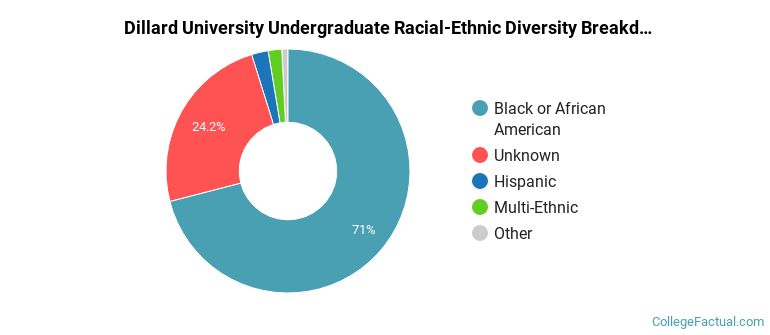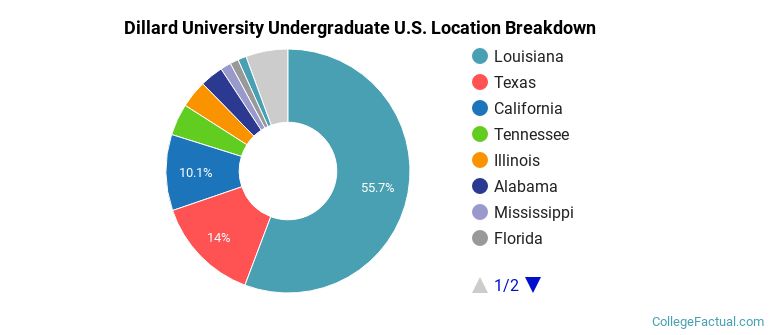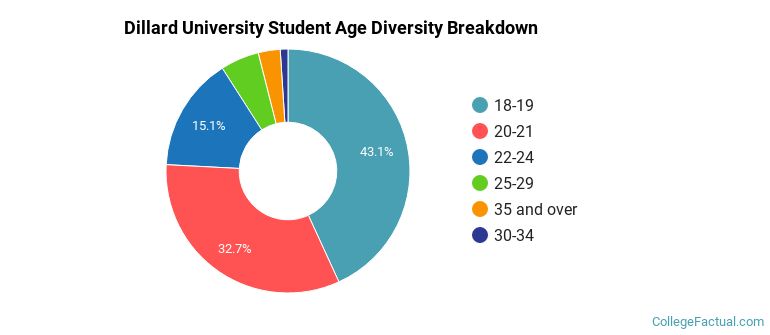 by our College Data Analytics Team
by our College Data Analytics TeamDillard University total enrollment is approximately 1,215 students.
Male/Female Breakdown of Undergraduates
The full-time Dillard University undergraduate population is made up of 78% women, and 22% men.

For the gender breakdown for all students, go here.
Dillard University Racial/Ethnic Breakdown of Undergraduates

| Race/Ethnicity | Number |
|---|---|
| Black or African American | 965 |
| Unknown | 123 |
| Hispanic | 33 |
| Multi-Ethnic | 20 |
| White | 3 |
| International | 3 |
| Native Hawaiian or Pacific Islander | 2 |
| Asian | 0 |
See racial/ethnic breakdown for all students.

| Race/Ethnicity | Number |
|---|---|
| Black or African American | 1,019 |
| Unknown | 130 |
| Hispanic | 33 |
| Multi-Ethnic | 20 |
| White | 4 |
| International | 4 |
| Native Hawaiian or Pacific Islander | 2 |
| Asian | 0 |

There are approximately 937 female students and 278 male students at Dillard University.
Dillard University ranks 567 out of 2,183 when it comes to geographic diversity.
44.88% of Dillard University students come from out of state, and 0% come from out of the country.

The undergraduate student body is split among 21 states (may include Washington D.C.). Click on the map for more detail.

| State | Amount |
|---|---|
| Louisiana | 199 |
| Texas | 50 |
| California | 36 |
| Tennessee | 15 |
| Illinois | 13 |
Students from 8 countries are represented at this school, with the majority of the international students coming from Mexico, Nigeria, and Senegal.
Learn more about international students at Dillard University.
A traditional college student is defined as being between the ages of 18-21. At Dillard University, 74.65% of students fall into that category, compared to the national average of 60%.

| Student Age Group | Amount |
|---|---|
| 18-19 | 548 |
| 20-21 | 415 |
| 22-24 | 192 |
| 25-29 | 65 |
| 35 and over | 37 |
| 30-34 | 13 |
| Under 18 | 0 |
Footnotes
*The racial-ethnic minorities count is calculated by taking the total number of students and subtracting white students, international students, and students whose race/ethnicity was unknown. This number is then divided by the total number of students at the school to obtain the racial-ethnic minorities percentage.
References
Department of Homeland Security Citizenship and Immigration Services
Image Credit: By Infrogmation under License
Learn more about how College Factual creates their Diversity Rankings.